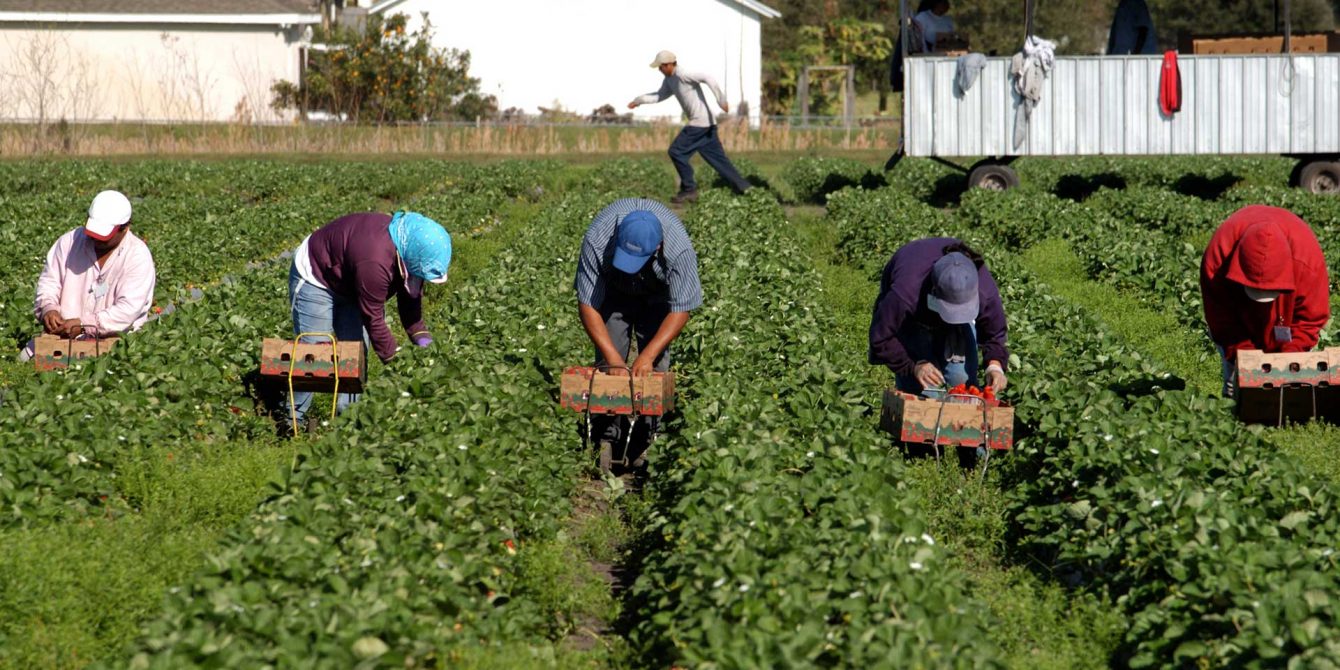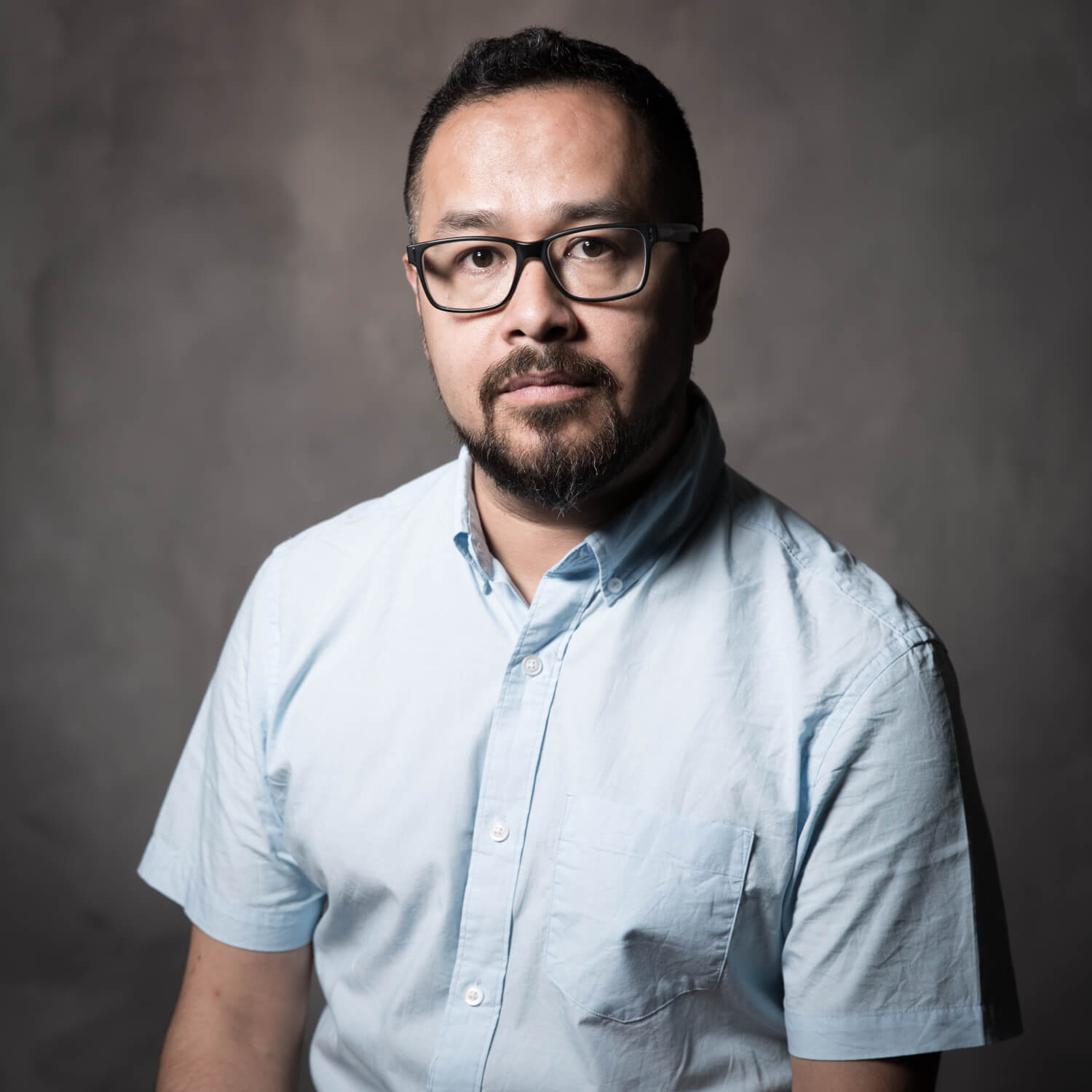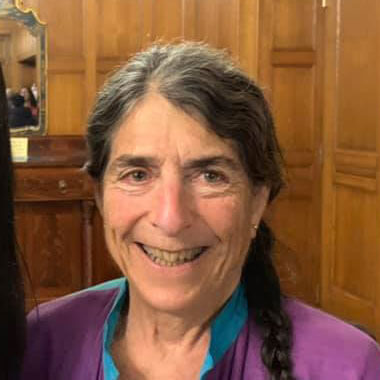Share this Post
There are big connections that are obvious to immigrants who have come here because of climate change. One direct example in my story is the CIA intervention [in Guatemala] that triggered civil war, made millions flee, and took the land away from small farmers and gave it to the multinationals. This created two conditions – poverty: people who had been able to grow food for themselves and sell a little – that was gone. Those folks, the peasants, were suddenly workers who had to go to work in the plantations run by the transnational corporations, but many had to leave the country altogether.
The redistribution of land also caused climate chaos because you went from traditional farming methods that include the three sisters – corn, squash, beans – that create micro-environments that are regenerative. The transnational corporations reimplemented monoculture: sugar cane, bananas, coffee, and other tropical fruit for import into the US. This also triggered the beginning of an entire mono crop culture in Guatemala. If you were a farmer, to compete, to have your crops worth anything, you had to grow more and more and use more chemicals.
1954 devastated Guatemala. Most of those who lost their land ended up working on plantations. Folks were bussed into the huge plantations and lived there for six months of the year in farmworker housing that was not necessarily free, or even cheap. You work for six months of the year away from your family and then you are unemployed for six months during the rainy season. Earnings were in Quetzales, Guatemalan currency. So why not come to the US and earn dollars? The peasants have been displaced from their ancestral lands. Corporate monocrops triggered the loss of deep-rooted vegetation, so during the rainy season you have huge landslides. Because of overall climate chaos, you have more violent storms that are more frequent than in the past. There had been one big hurricane per generation since the ‘70s; these days, there are a handful every year. Most of those who leave are former farmers. They come to the US and do farm work. If you come from the city, you do restaurant work. Either way, you end up in the food system. According to Axel Fuentes, Director of the Rural Community Workers Alliance in Missouri, and a Guatemalan, the workers’ center services a mainly refugee population and a big percentage of the workers in meat processing are Guatemalan.
We have talked to farmers on different scales – from 10 to 50 workers. Farmers will tell you they can’t pay more because the crops sell at a price point that is way too low. They are living from hand to mouth. So, the pay they make creates their quality of life. If they pay their workers a living wage, they are left with nothing. It’s a balancing act. Most farmers are not dismissive about paying less than what is fair. Especially for smaller farmers, if they had an increase, the money would go to the workers to increase wages and provide benefits. Those farmers are working too; they know how difficult farm work is.
As part of the Real Meals Campaign at the HEAL Food Alliance, we are working with Aramark, Sodexo, and the Compass Group. We met with them – shamed them – and some have been open to working with us and negotiating. The campaign demands that they invest in getting more Black and Indigenous People of Color (BIPOC) producers in their supply chain. We chose North Carolina as one location to do a pilot, but this experiment isn’t over yet. As soon as we start talking about infrastructure where we need investment, the conversation slows down. But the question is an important one: what improvements and investments are needed to create equity? When we talk about what the real price has to be to keep these farmers afloat – the conversation slows down. One effect of the COVID-19 crisis - more people are interested in buying directly from farmers. How can large scale buyers highlight their commitment to BIPOC producers in the marketplace? This has to do with the reality that these are businesses and they have a bottom line. Our strategy is to figure out how we impact their bottom line.
When we first started Food Chain Workers Alliance (FCWA), we were pretty clear, and this was Nelson Carrasquillo’s position, that we did not want big unions in the Alliance. Not because we did not agree, but we wanted to be sure that BIPOC people set the terms, people who had been working under current conditions. We also knew that the real end goal was going to have to be to influence the big unions. Whether we like it or not, they are the only organizations on our end of the political spectrum that have the resources and the history to unite working people in a common strategy aimed at improving working conditions, wages, and overall dignity. There is no other player in any sector that shares those elements.
So, the goal was to establish a united front of workers’ centers that had a clear vision of transformation of the food system, and then bring unions along. While I was at FCWA, we did not succeed in doing that, but the new directors are getting closer. They have pivoted to organizing in labor. That will have an impact on how unions perceive food workers. SEIU has been supportive of Fight for $15 and union locals have backed the Restaurant Opportunities Center (ROC) effort. ROC and Service Employees International Union [SEIU] have been sharing strategies to try to understand how to work together. When Fight for $15 was launched, some of the things they were doing mimic ROC, a flattering use of techniques ROC pioneered. The big unions have never joined FCWA: they have a close relationship, but not membership. Some of the more progressive locals are members and two national unions (Retail, Wholesale, and Department Store Union [RWDSU] & Unite Here in the US and a Quebec-based union) as well as a number of local unions (United Food and Commercial Workers [UFCW] 770, Familias Unidas & Burgerville Workers Union).
I was born and raised in Xelaju, Guatemala. My grandfather earned a PhD in economics. On the eve of WWII, he was caught up in the wave of idealism, he joined women and workers and civil society in overthrowing the dictatorship in Guatemala. They were successful and established the first democracy in 1940. Later, the democratically elected President, Jacobo Arbenz, asked my grandfather to be Vice-Minister of Agriculture, with the first job to do an assessment of the amount of arable land in the country. He found out that United Fruit Co (aka Chiquita) owned two-thirds of all arable land. The plan was to divide up the big holdings and give the land to landless people. The Arbenz government nationalized all idle arable land and paid market rate for it, literally paying the companies for the land they owned. There was an interesting personality involved: the CEO of United Fruit was John Foster Dulles whose brother was head of the CIA (Allen Dulles). He told his brother that it was a commie takeover – this is what triggered the CIA coup. Guatemala and Iran were the first CIA efforts in overthrowing a foreign head of state. This intervention precipitated a civil war that lasted 36 years until the 1996 peace accord. Over 200,000 died and one million were displaced, including my family.
In 1985, we came to the US. In Guatemala, my mom had been a school teacher. She ended up getting a job as a restaurant worker outside Chicago. As happens to many women working in restaurants, my mother was sexually harassed and suffered wage theft. Abuse was prevalent. But I was a child and when we would go and pick her up, I liked the workplace – it was abuzz with energy. I fell in love with the restaurant industry. I did not know about the abuses and what she was going through. We were undocumented asylum seekers until 1991 when a settlement was reached in the class action suit against the Immigration and Naturalization Service brought in 1985 by the American Baptist Church. That was how my family got papers. But I was already over 18, so I was not included and had to figure out another way to go to school. To pay my way, I took work in the restaurant industry. I did not have other options, but I didn’t feel like it was that bad. I started college in 1991 and spent ten years working in restaurants. I worked in every segment with many different jobs. My first job was in fast food as a cashier. My second job was at Shoney’s, where they have a buffet style restaurant. Customers get food themselves and they didn’t feel like they had to tip. On weekdays, I would go home with 10 dollars in my pocket. The actual pay was $2.13/hour, the federal minimum wage for tipped workers. When that wage was established, as a “compromise” by the Democrats to get Republicans to vote for an increase in the regular minimum wage, $2.13 was 50 percent of the minimum wage. It has been frozen ever since with horrible consequences for decades.
After I finished college, while working in a fancy fine dining restaurant on the Northside of Chicago, I started on my path to being an organizer. I was really only working in restaurants because of money. If you stay long enough and work front of the house, you make a good wage because of tips. The reality is – the percentage who do that is very small compared to all the others who work in the kitchen or those working at casual, fast food, etc. There was unrelenting abuse by the managers and owners. My co-workers and I, we would hang out after work at a local bar and talk about how horrible work was. At one of those sessions, we talked about organizing a union. At the time, I was volunteering at Casa Guatemala, so I knew a little about unions. I brought an organizer to meet with us. I was very disappointed and angry at the result. He said it was not possible to organize a restaurant staff of only 50. I later came to understand that unions lacked resources for many small units.
So, we decided to organize ourselves. We did not know what we were doing. One person in our little group was religious and talked to his priest who got on board with us. We ended up doing an action: we got a bunch of our co-workers together to confront the boss. We thought we had overwhelming power: “There’s no way he can say no.” We marched in with a list of demands: end sexual harassment and wage theft. When he saw us, he ordered us all to get out of his restaurant. We found ourselves outside. “So what do we do now?”
We had a good tactic, but not a full strategy. He fired two of us who he thought were the leaders – my white friend Dave, a waiter, and Martin, who was a runner. We came back next day with the priest and Univision, the Spanish language TV station. Once again, we did the same thing. We delivered our petition, but this time, we knew we would get kicked out, so outside we leafletted. We had researched our rights. We ended up signing an agreement with the owner that he would fire the manager who was sexually harassing, that tips would go directly to workers and there would be a monthly meeting to assess if the agreement was being applied fairly.
At first, I thought it was amazing – we had developed a new model of organizing! We could take this to other restaurants. And that is how we founded the Chicago Interfaith Workers Center (2003 – it has since been renamed Arise Chicago) starting with folks we were organizing with the support of that priest. The National Employment Law Project invited me to speak about workers’ centers, “our new model,” at an event in NY on a panel with ROC (the Restaurant Opportunity Center). Saru Jayaraman, the founder, blew me away. Not only were we not the only ones doing this kind of organizing of low-income workers – they were way ahead of us. So we decided to join forces with Saru. In 2006, we had developed the network into ROC United, organizing restaurant workers around the country.
Food Chain Workers
While doing this, we were noticing a change – restaurant customers were asking questions about the food. Where does the chicken come from? is the produce organic? At first, we thought - just another trend. Then we realized it was more than that, that people were taking food as having a deeper meaning; we experience cultural values through the food we are eating and the environmental impact of the way the food is grown. And food waste. The way we thought about it, there was something missing: the workers – the people who do the work growing, packing, processing, cooking, serving. It became evident that we couldn’t just focus on restaurant workers. That was the beginning of the Food Chain Workers Alliance (FCWA) in 2008, to bring together all the people organizing food workers. Nelson Carrasquillo was pivotal. He was General Coordinator of the Farm Worker Support Committee (CATA – Comite de Apoyo a los Trabajadores Agricola) based in New Jersey. He talked about how similar farmworkers and restaurant workers are. Brandworkers joined too. There were five or six organizations. We decided to create an alliance – Food Chain Workers Alliance (FCWA).
Health, Education, Agriculture, Labor
Climate change was becoming an important issue. Everyone in the climate movement was talking about energy and a few about food waste and transportation. But if you look at the causes of climate change, it is bigger than energy. It is imperative to bring together food and climate. We started to bring together what we called Food Blocks. There are four sectors – health and nutrition, the environment, access to good food in rural and urban areas, and labor. Though we were not calling it HEAL (the Health, Environment, Agriculture and Labor Food Alliance) at the time.
It wasn’t till 2012, when we ran into Navina Khanna at a gathering organized by us (FCWA) at the Ford Foundation. After the meeting, she pulled me aside and showed me a report she had written – “From Field to Forest.” In this report she mapped the food movement and the organizations that consider themselves part of it. It had everyone we thought of and a lot more – it was like my original meeting with Saru. We compared notes and I discovered that her organizing had outpaced ours. It didn’t make sense to continue separately without Navina, so instead of competing, we merged the processes. She was calling together strategy circles around the country. Her lens included something we did not have as a focus: which ones include BIPOC folks in their leadership? What is the power distribution between the white and BIPOC groups?
That was it! From that point forward, we made sure the folks we had talked to, the FCWA members, were centrally invested and making decisions in how to move it forward. We went through a two-year process to agree to a theory of change, our focus for strategy, and to build a program for our coalition, our platform. We did not want to launch HEAL publicly until the process was completed. In 2015 in Chicago was the first meeting where we called it the HEAL Food Alliance. The platform includes the elements and the strategy to get there. It is a blueprint and a process for moving forward. Not perfect – there are things we can add. But if it were implemented tomorrow, we could radically transform the food system and provide justice in so many realms.
Our Solutions
- Reduce and regulate industry consolidation: implement and enforce anti-trust law, especially the Packer and Stockyards Act, and strengthen “Actively Engaged in Farming” rules
- Reform federal farm subsidy programs, including the federal crop insurance program, so that they equally support diverse growing practices and all farmers, including farmers of color, small and midsize farmers, and independent and historically underserved farmers
- Re-instate supply management and grain reserves and a fair pricing system
- Secure fair pricing and contracts for livestock, produce, and seafood
- Reclaim public institutions to achieve greater transparency: keep land grants in the public interest, and ensure representation of farmers, workers, and consumers on government advisory bodies
- Fight and reduce financial speculation in food and agriculture
- Reform trade rules and trade institutions to rebuild and protect local food systems, and establish transparent processes for public review and input
![]() US Interventionism, Climate Change and Organizing Low-Wage Food Chain Workers: An Interview with Jose Oliva by Elizabeth Henderson and Jose Oliva is licensed under CC BY-SA 4.0
US Interventionism, Climate Change and Organizing Low-Wage Food Chain Workers: An Interview with Jose Oliva by Elizabeth Henderson and Jose Oliva is licensed under CC BY-SA 4.0


 Jose Oliva
Jose Oliva  Elizabeth Henderson
Elizabeth Henderson